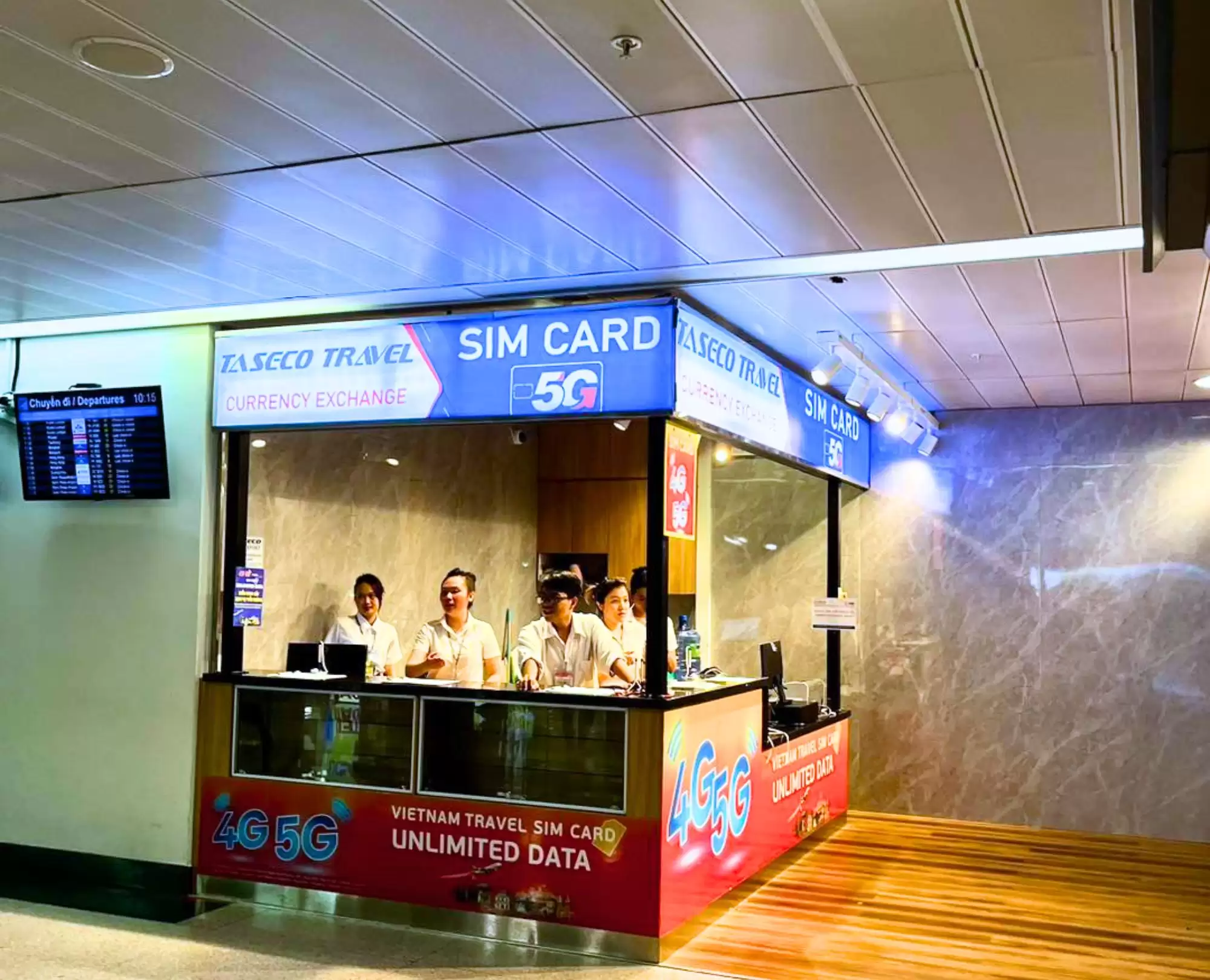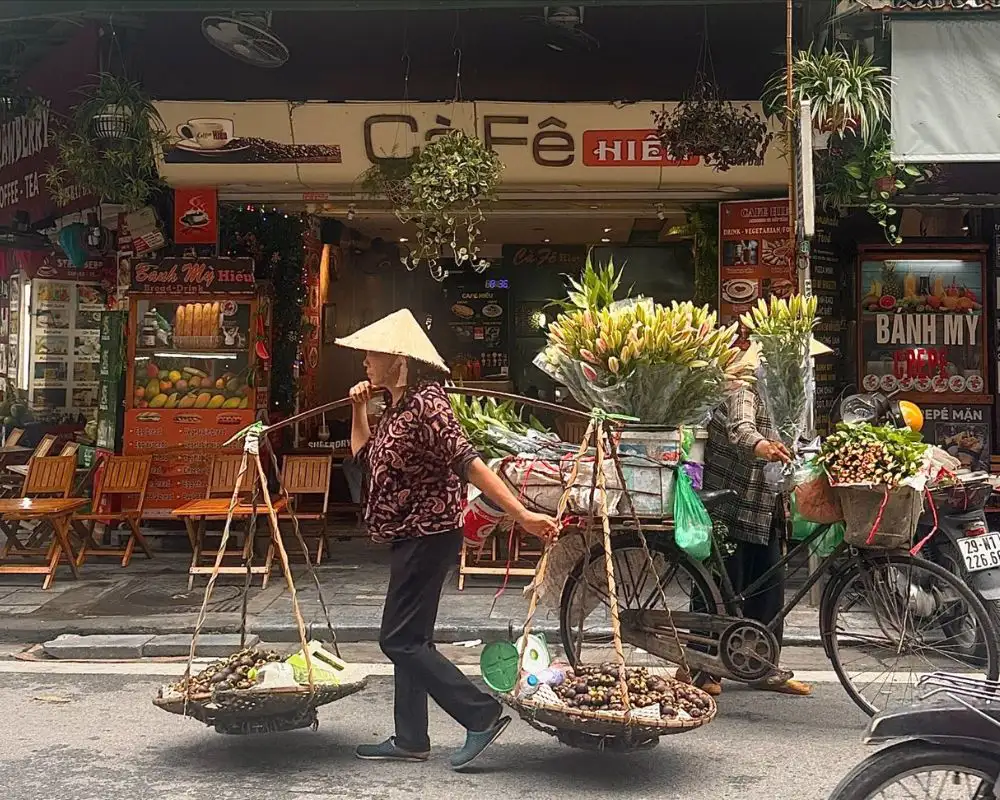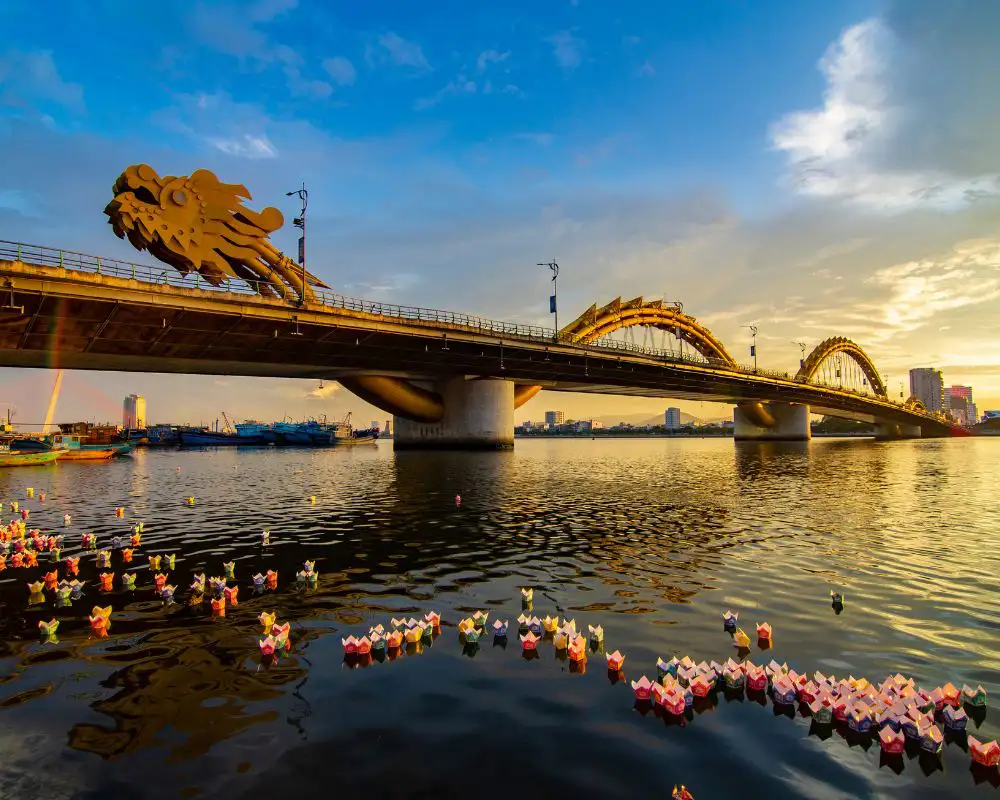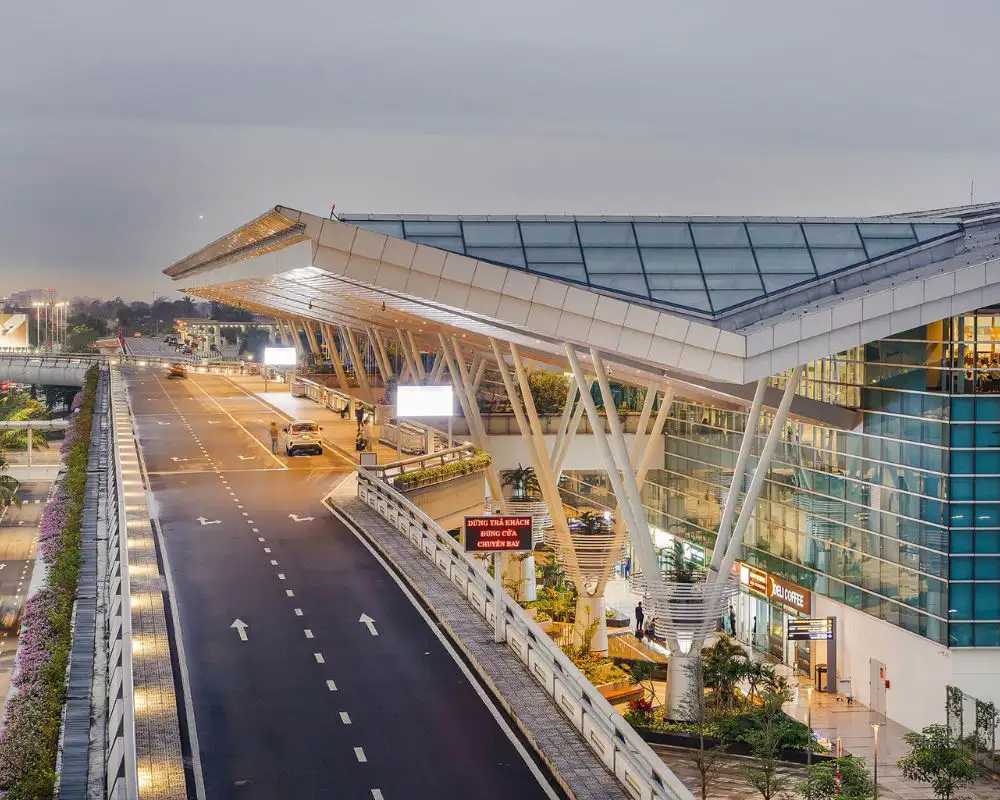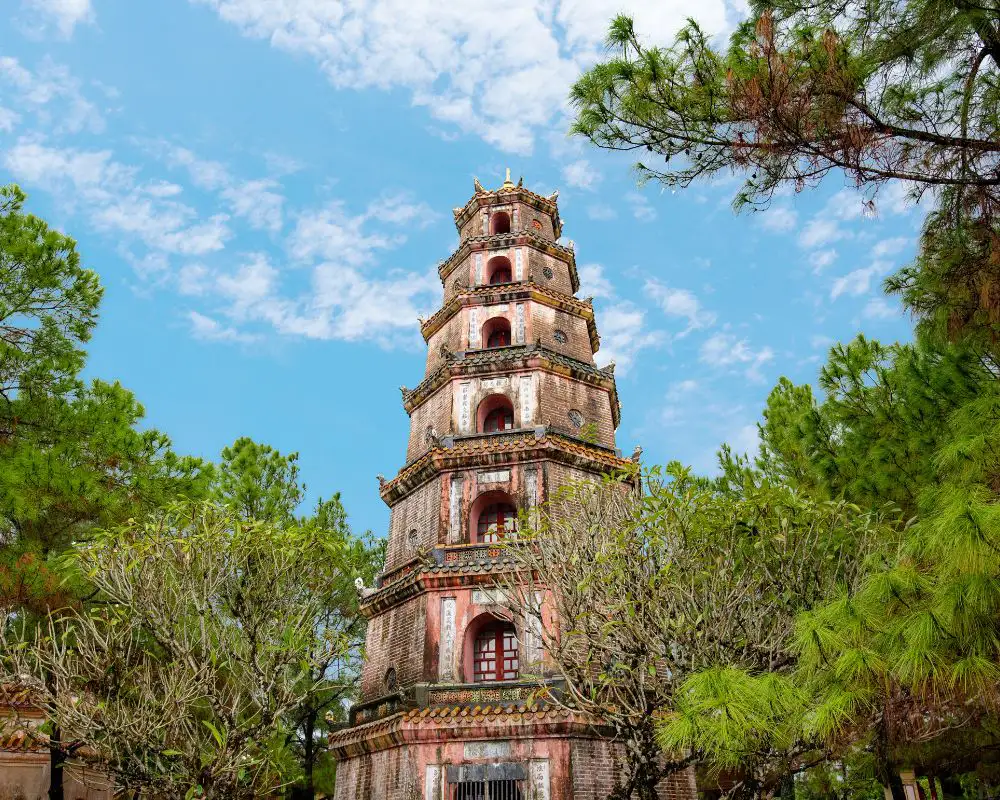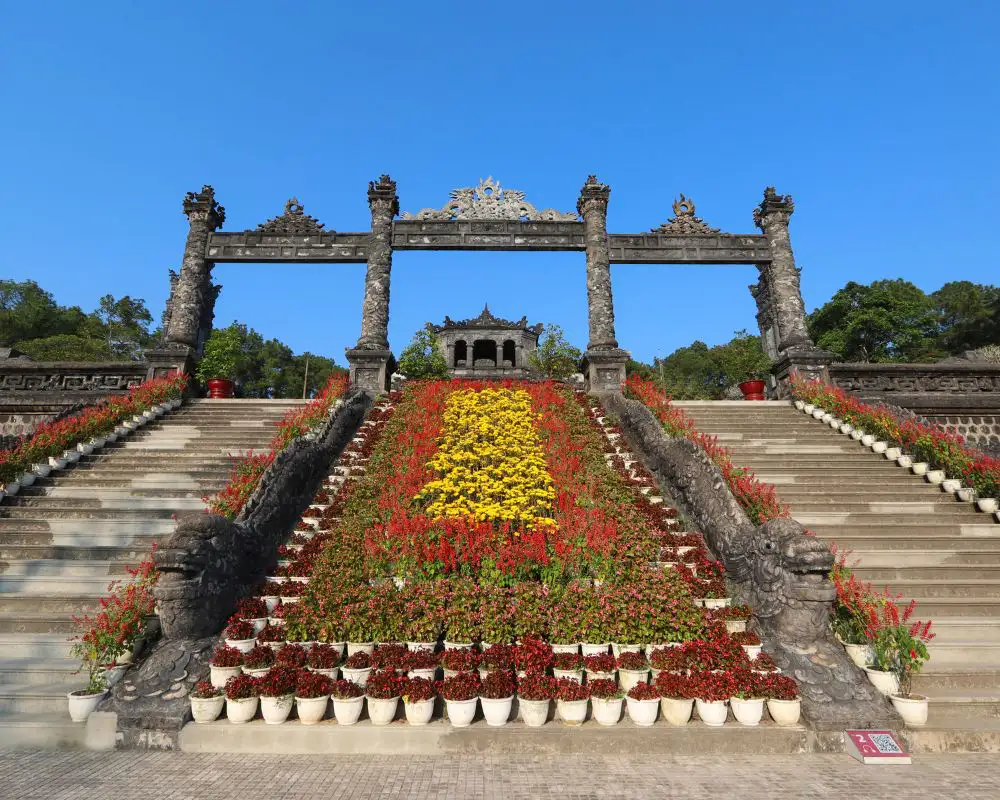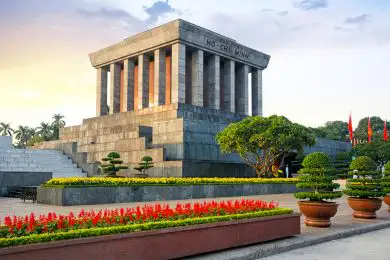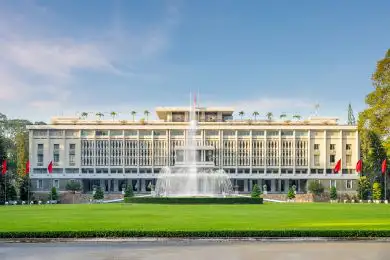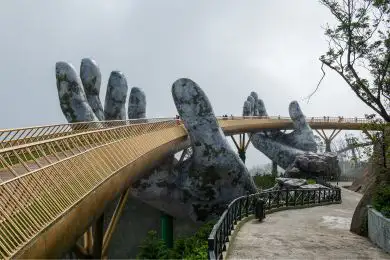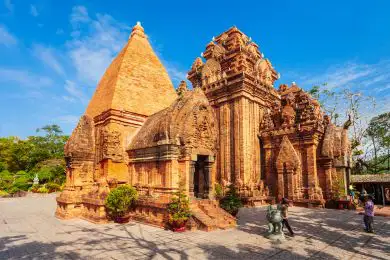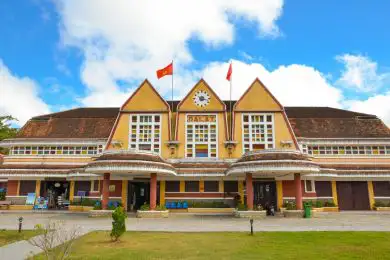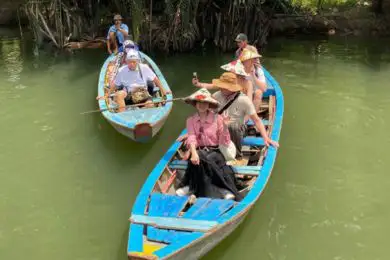Minh Mang Tomb, nestled in the serene landscapes of Hue, Vietnam, is a captivating testament to the grandeur of the Nguyen Dynastyand top things must do in Hue 2024. This historical site, dedicated to Emperor Minh Mang, stands as a masterpiece of traditional Vietnamese architecture, intricately blending natural and man-made elements.
With its meticulously designed layout, symbolic carvings, and tranquil gardens, Minh Mang Tomb offers visitors a profound glimpse into the cultural and spiritual heritage of Vietnam.
Join us as we delve into the rich history, stunning architecture, and cultural significance of this iconic tomb, an essential destination for any traveler exploring the wonders of Hue.
Overview of Minh Mang Tomb
- Address: Huong Tho commune, Huong Tra district, Thua Thien Hue province
- Opening hours: from 7:30 am to 5:00 pm
- Entrance fee:
- Adults: 150,000 VND
- The elderly: 50,000 VND
- Children: 20,000 VND
Minh Mang Tomb, located in Hue, Vietnam, is a remarkable testament to the architectural and cultural heritage of the Nguyen Dynasty. Known for its grand design and serene landscape, the tomb is a significant historical site that attracts numerous visitors yearly. It was constructed for Emperor Minh Mang, who ruled from 1820 to 1841 and is renowned for his contributions to consolidating Vietnamese territory and strengthening the country.
Top attractions in Tomb of Minh Mang Hue Vietnam
Dai Hong Mon (Great Red Gate)
The Dai Hong Mon is the grand entrance gate to Minh Mang Tomb. This imposing structure stands as a symbol of imperial authority and power. It features intricate carvings and detailed artwork, showcasing the exquisite craftsmanship of the period.
The gate is adorned with traditional motifs, including dragons and phoenixes, symbolising strength and prosperity. The vibrant red color of the gate is associated with good fortune and protection in Vietnamese culture.
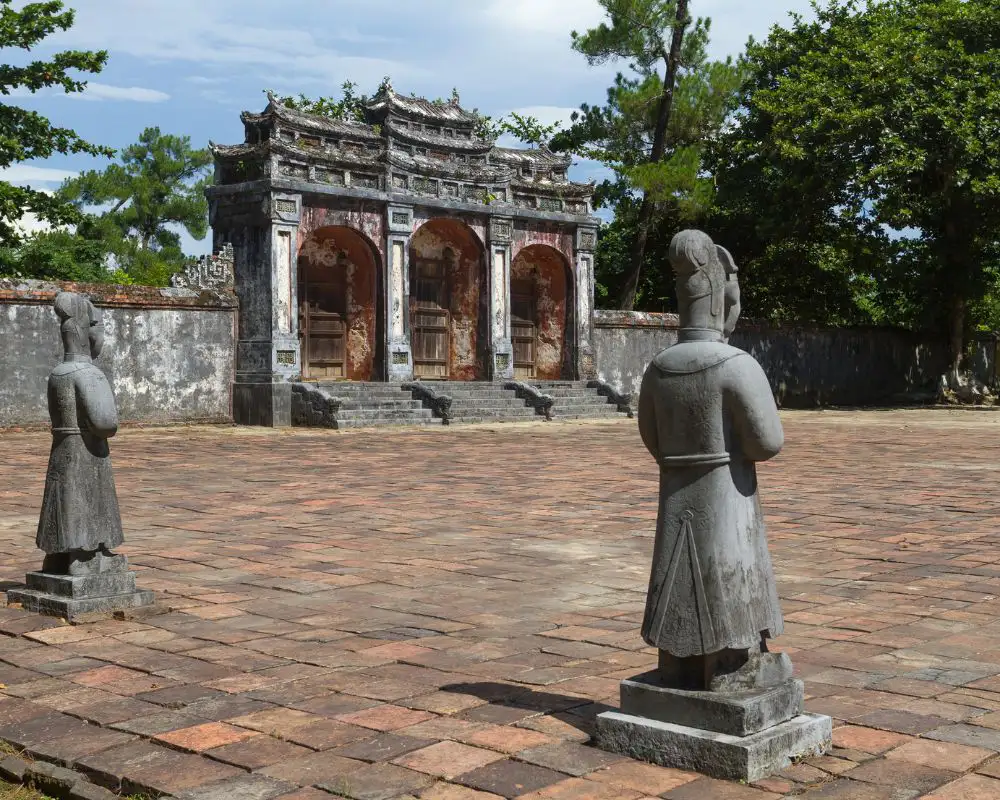
Bi Dinh (Stele Pavilion)
The Bi Dinh houses a large stele with inscriptions detailing the life and achievements of the mausoleum of emperor Minh Mang. These inscriptions provide valuable insights into the emperor’s reign and the historical context of his rule.
The stele pavilion is a historical record and a symbol of the emperor’s enduring legacy. It stands as a testament to his contributions to Vietnamese history and culture.
Sung An Temple
Sung An Temple is dedicated to worshipping Emperor Minh Mang and his empress. This temple is a place of reverence and respect, where rituals are performed to honor the emperor’s spirit.
The temple features traditional Vietnamese architectural elements, including intricate woodwork and beautifully crafted altars. The serene ambiance of the temple makes it a significant spiritual site within the tomb complex.
Hien Duc Gate
Hien Duc Gate serves as a symbolic passage within the tomb complex. It marks the transition from the earthly realm to the spiritual domain, reflecting the emperor’s journey to the afterlife.
The gate is adorned with symbolic motifs and detailed carvings. Its design is both aesthetically pleasing and rich in cultural symbolism, representing protection and prosperity.
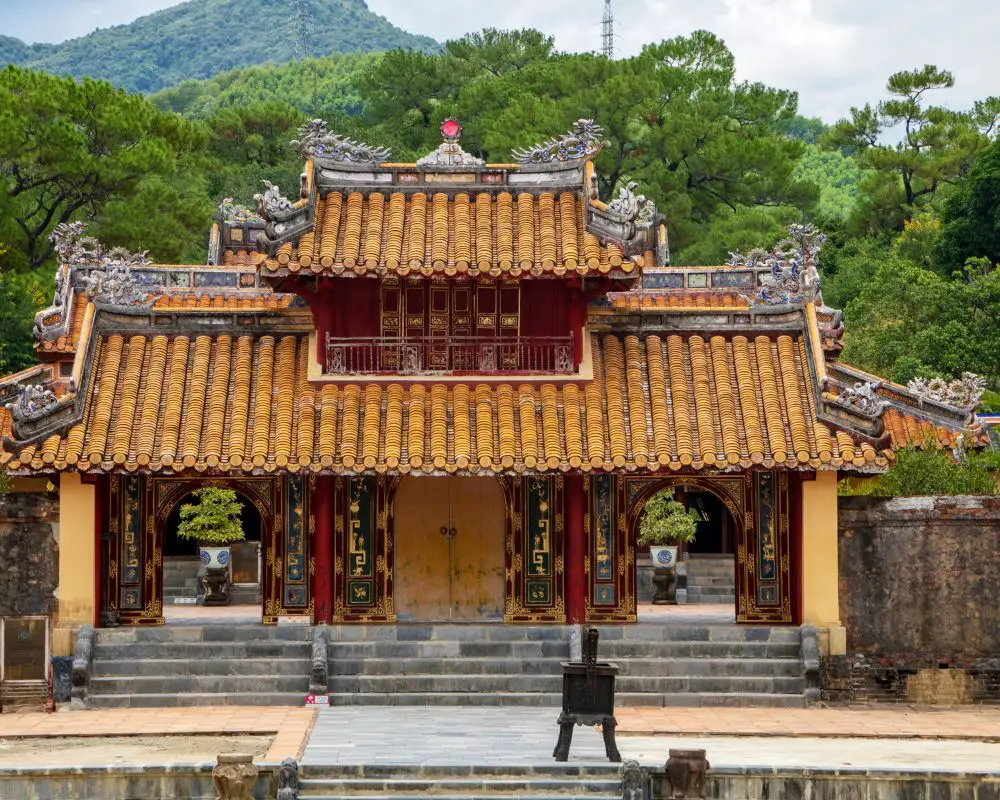
The Courtyard
The courtyard is a central gathering area within the tomb complex. It is designed to provide a space for reflection and contemplation, surrounded by lush gardens and serene water features.
The courtyard is historically significant as it was used for various ceremonies and rituals. Today, it serves as a tranquil space for visitors to relax and appreciate the beauty of the tomb complex.
The Esplanade of Salutation
The Esplanade of Salutation is a significant area where ceremonies were held to honor the emperor. This space reflects the grandeur and formality of the imperial court. Impressive architectural features, including stone pathways and ceremonial platforms mark the esplanade. It provides a glimpse into the ceremonial practices of the Nguyen Dynasty.
Pavilions and Temples
Various pavilions and temples are scattered throughout the tomb complex, each serving a specific function in the emperor’s afterlife journey. These structures are designed to facilitate spiritual rituals and offer places of worship.
The design of these pavilions and temples incorporates traditional Vietnamese architectural elements and rich symbolic meanings. Each structure is adorned with carvings and artwork that reflect cultural and spiritual themes.
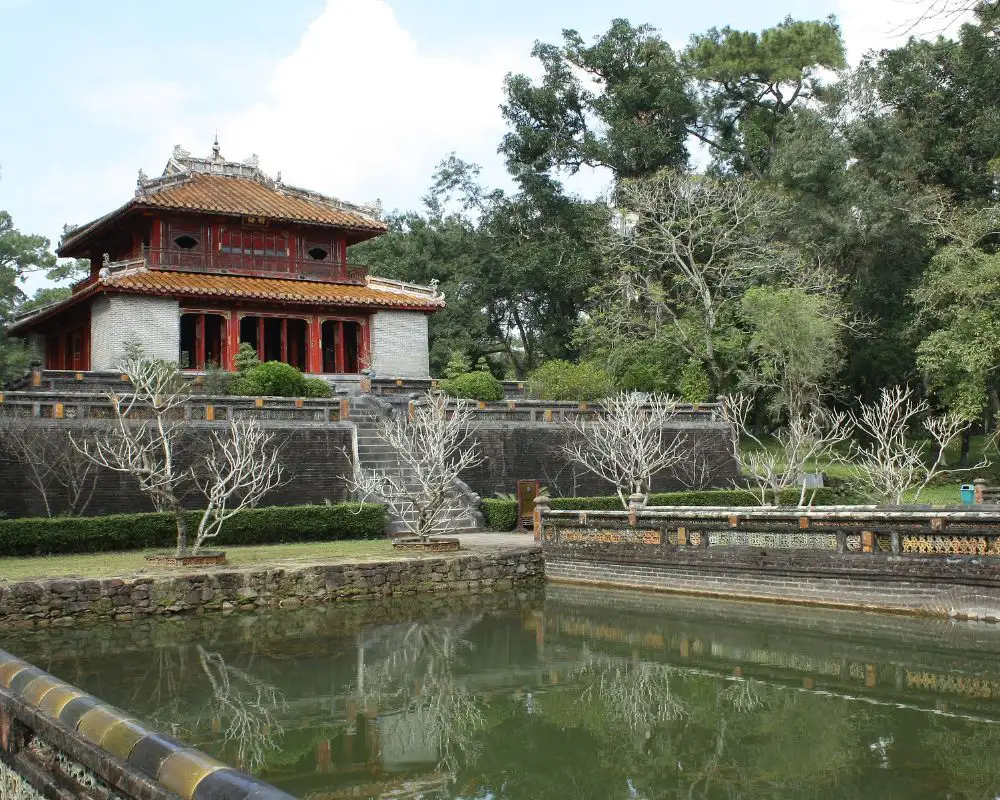
Lakes and Water Features
Water features are integral to the design of the royal tomb of Minh Mang, symbolizing purity and life. Lakes and ponds within the complex are carefully positioned to create a harmonious balance with the natural landscape.
The water features are designed to enhance the aesthetic appeal of the tomb complex. They reflect the sky and surrounding greenery, creating a tranquil and picturesque environment.
Bridges within the Complex
Bridges within the tomb complex symbolize the passage between life and the afterlife. These elegantly designed structures connect different parts of the complex, enhancing the overall harmony and balance.
The bridges are adorned with intricate carvings and traditional motifs. Their design reflects the cultural and symbolic significance of bridging the earthly and spiritual realms.
Gardens and Landscaping
The gardens of Minh Mang Tomb are meticulously designed to complement the architectural elements. They feature a variety of native plants and trees, creating a serene and aesthetically pleasing environment.
The gardens are home to diverse flora and fauna, including rare and ancient trees. The lush greenery and vibrant flowers contribute to the tranquil atmosphere of the tomb complex.
The landscaping is designed to create a harmonious balance between nature and architecture. The carefully arranged plants and trees enhance the visual appeal and symbolic significance of the site.
Tang Minh Lau (Bright Pavilion)
Tang Minh Lau, or the Bright Pavilion, is a significant structure within the tomb complex. It features traditional Vietnamese architectural elements, including intricate woodwork and decorative carvings.
The pavilion serves as a place for reflection and contemplation. It is historically significant as it represents the emperor’s vision and legacy, offering stunning views of the surrounding landscape.
The Emperor’s Tomb
The emperor’s tomb is the central structure within the complex, symbolizing his final resting place. It is designed to reflect the emperor’s journey to the afterlife, with each element carefully positioned to enhance the symbolic significance.
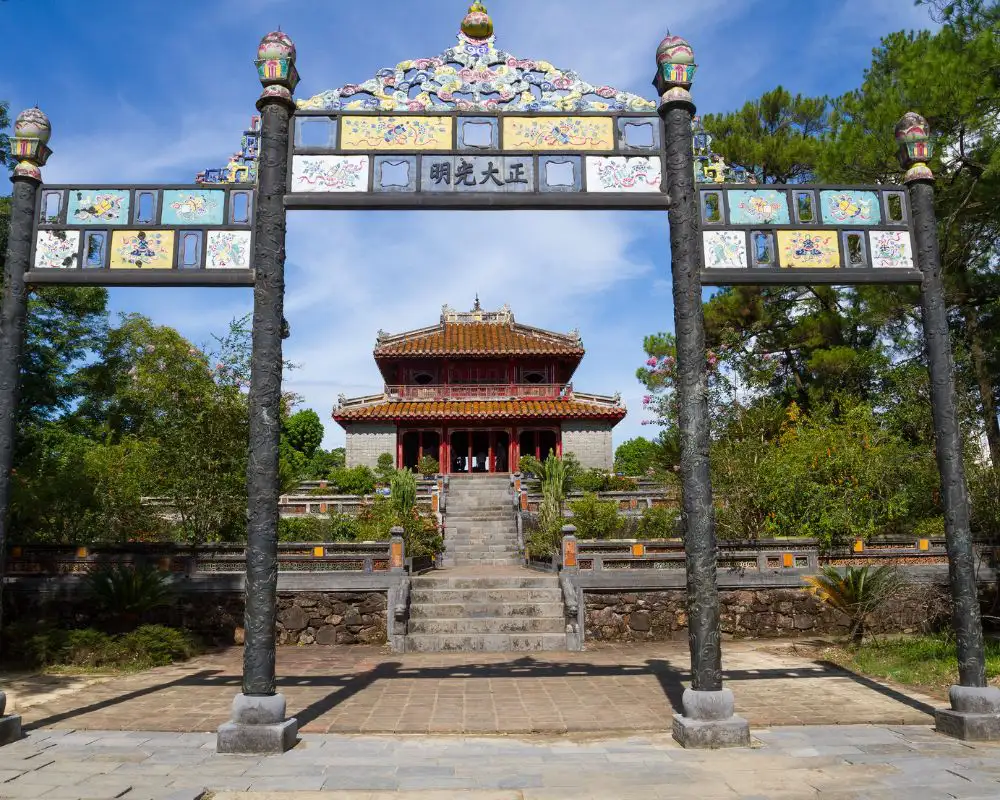
The design of the tomb incorporates traditional Vietnamese and Confucian elements. It features symbolic motifs and carvings that represent the emperor’s power, protection, and eternal legacy.
The emperor’s tomb is a testament to Minh Mang’s contributions to Vietnamese history. It reflects the grandeur and cultural richness of his reign, attracting numerous visitors who seek to explore its historical and cultural significance.
Read more:
Best time to visit Minh Mang Tomb
The beginning of spring, from January to February, in Hue is when the weather is at its most lovely and pleasant, with cooler temperatures, less sunshine, and no rain. This would be a good time to take a tour of the historic city of Hue, which would include a visit to the Minh Mang Tomb as well as other popular tourist destinations.
How to get to Minh Mang tomb?
You have your choice between the following two routes to take in order to reach the Tomb of Minh Mang:
- From the city center, take a taxi/private car or a motorbike to National Road 49 and continue straight until you reach Tuan Bridge. From there, the mausoleum is located directly in front of you.
- Embark on a traditional dragon boat ride upstream down the Perfume River, which will bring you to the royal tomb, and take in the stunning panorama of the surrounding landscape as you travel.
Visiting Minh Mang Tomb as part of a comprehensive Hue City tour 1 day or some days offers a rich and immersive experience. Our well-curated tour packages ensure that you explore the best of Hue’s historical and cultural attractions, providing a memorable journey through one of Vietnam’s most beautiful and historically significant cities. Whether you choose a guided tour or a customized private tour, we are committed to making your visit to Hue unforgettable.
You can refer to some our tours like:

